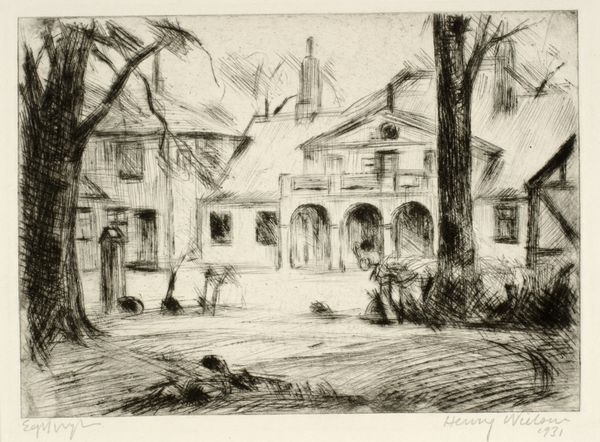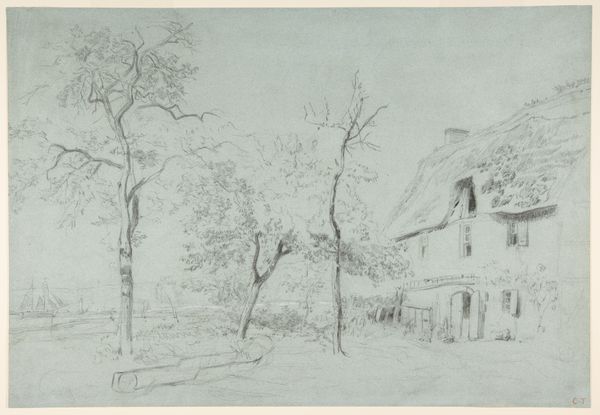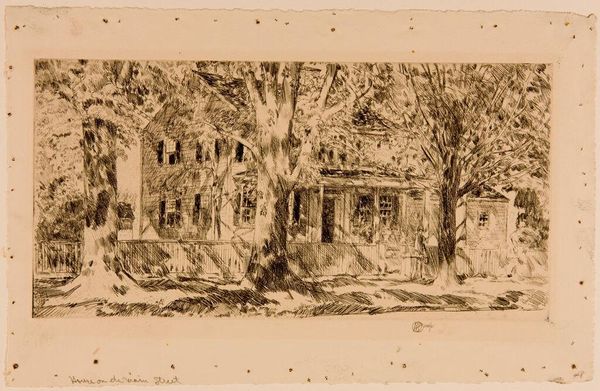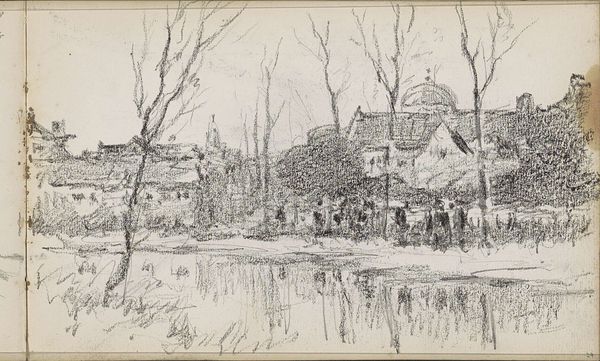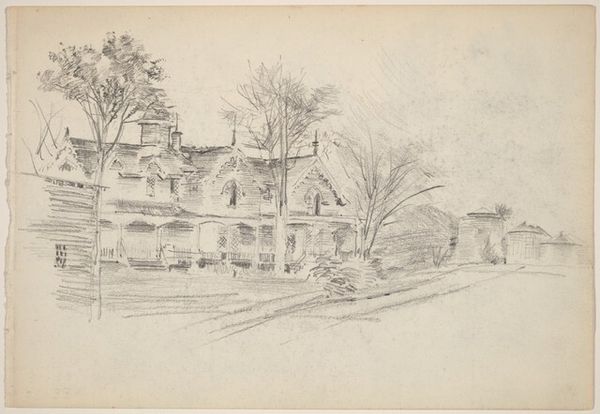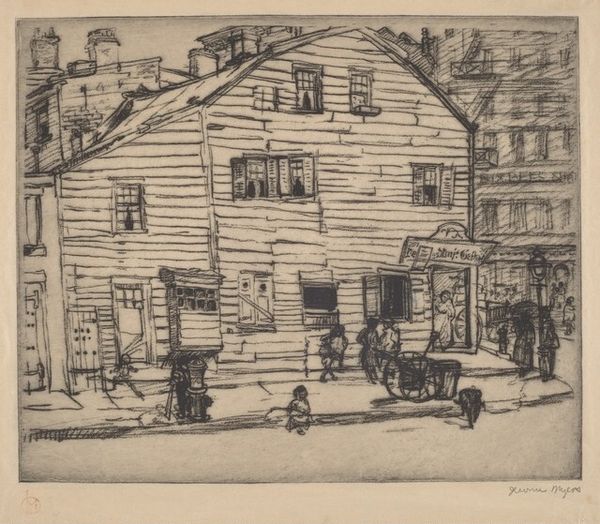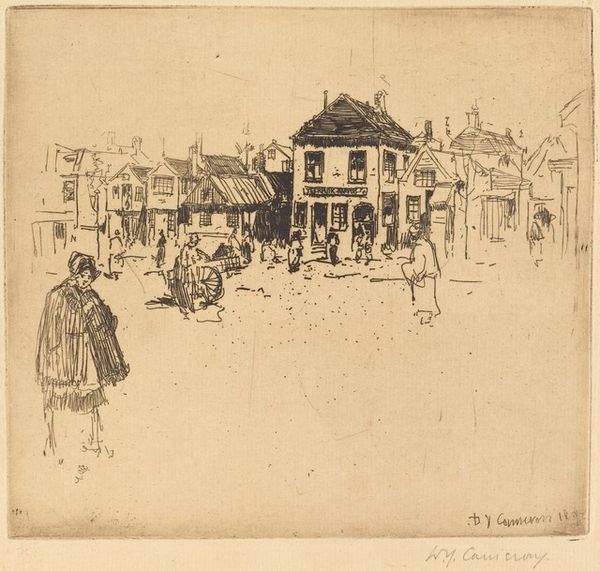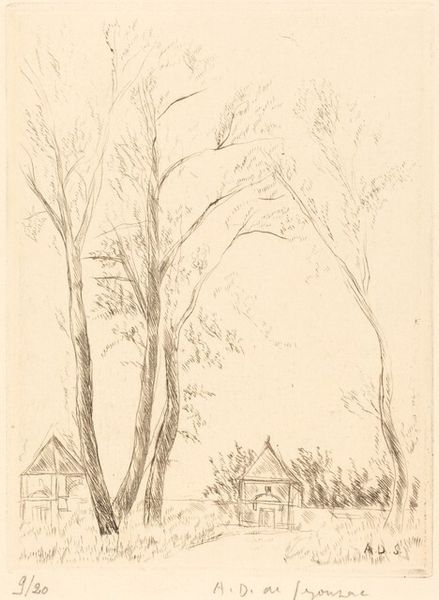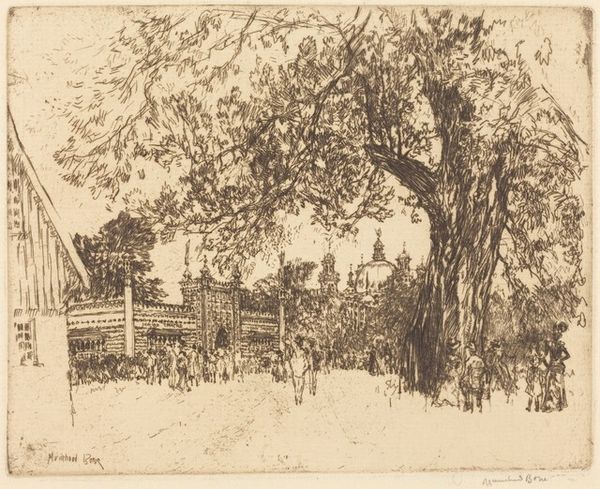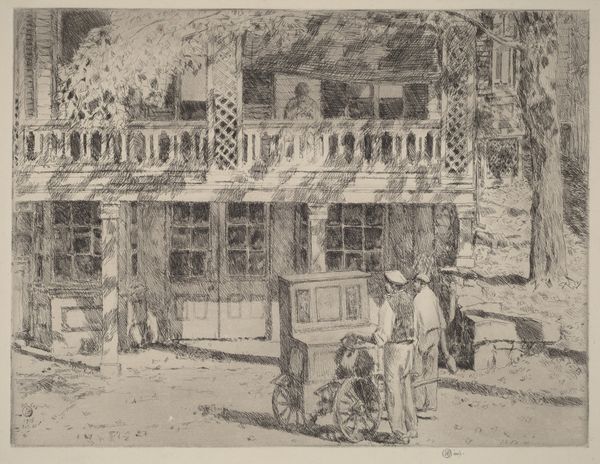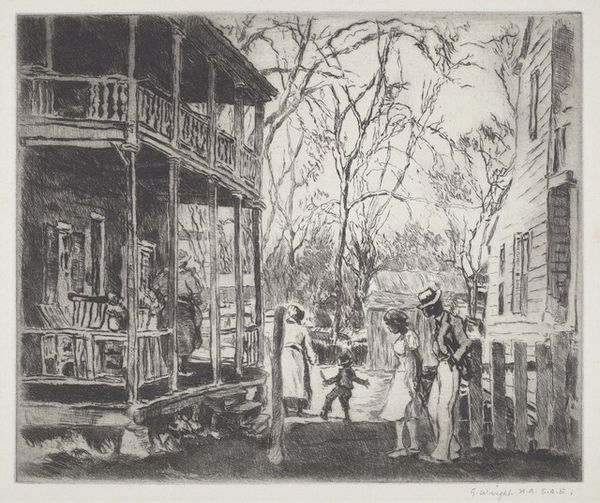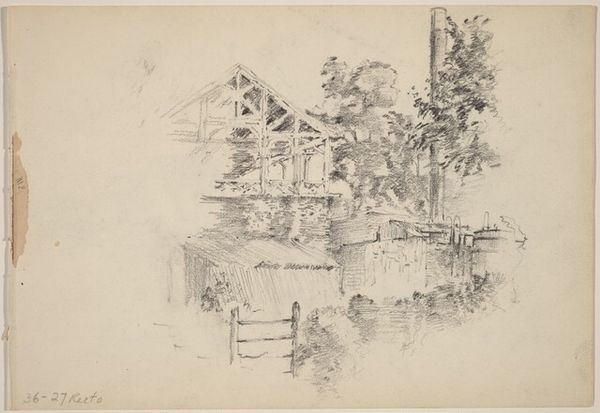
drawing, print, etching, graphite
#
drawing
# print
#
etching
#
landscape
#
graphite
#
cityscape
#
academic-art
#
realism
Copyright: National Gallery of Art: CC0 1.0
Editor: So, this is Ernest Roth's etching, "Wheelwright Shop," created in 1919. It has this almost dreamlike quality to it, despite depicting what seems to be a very practical, working space. How do you interpret this work, given its time? Curator: Roth’s choice to depict a wheelwright shop in 1919, after the First World War, feels loaded. It's not just a quaint scene; it's a statement. What was being built and for whom, becomes the essential questions. Was it a nostalgic look back to simpler, pre-industrial times, or a quiet reflection on the means of production in a world rapidly transforming after mass carnage? Editor: I hadn’t considered that. So, you’re suggesting that choosing such a traditional trade might be a deliberate commentary on modernity? Curator: Precisely! Etchings like this offered a seemingly objective lens on labor. But whose stories were being told, and who were often left out of these idyllic, and frequently romanticized scenes of the common tradesmen? Does this perspective make you think differently about the people included here? Editor: Definitely. I now wonder about the unseen workers, and who held power in this setting. Curator: Think also about the circulation of these images. Were they intended to reach people, and potentially sway opinions of what type of labor has worth and purpose after a brutal war? Editor: So, Roth’s "Wheelwright Shop" becomes more than just a scene, it invites us to think about how labor, class, and even identity are being constructed and presented to society at this time. I see that it provides so much space for interrogation of culture, power, and people, even in the context of a relatively small etching! Curator: Indeed, by prompting these deeper inquiries, the art opens up to greater interpretations.
Comments
No comments
Be the first to comment and join the conversation on the ultimate creative platform.
